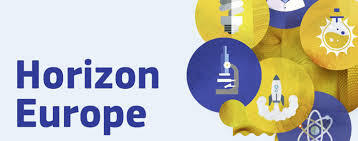What is new in Horizon Europe?
Main content
Four strategic orientations
- Promoting an open strategic autonomy, by leading the development of key digital, enabling and emerging technologies, sectors and value chains
- Restoring Europe's ecosystems and biodiversity, and sustainably managing natural resources
- Making Europe the first digitally enabled circular, climate-neutral, and sustainable economy
- Creating a more resilient, inclusive, and democratic European society
Key Impact Pathways
The Key Impact Pathways will allow the Commission to capture and communicate the difference we are making around 9 key story lines during and after the programme.
Scientific impact
- Creating high-quality new knowledge
- Strengthening human capital in research and innovation
- Fostering diffusion of knowledge and Open source
Societal impact
- Addressing EU policy priorities and global challenges through research and innovation
- Delivering benefits and impact through research and innovation missions
- Strengthening the uptake of research and innovation in society
Towards technological/economic impact
- Generating innovation-based growth
- Creating more and better jobs
- Leveraging investment in research and innovation
European Innovation Council (EIC)
Support for innovations with potential breakthrough and disruptive nature with scale-up potential that may be too risky for private investors. This is 70% of the budget earmarked for SMEs. EIC is integrated in Pillar 3.
Missions
Sets of measures to achieve bold goals within a set timeframe to solve big global challenges, still in the sketching phase. There are 5 main mission areas as part of Horizon Europe: on climate, cancer, oceans, smart cities and soil health. The missions are modelled on the US Apollo moonshot. They are integrated within Horizon Europe. Read more.
Open science policy
Mandatory open access to publications and open science principles are applied throughout the programme Factsheet: Open science in Horizon Europe.
New approach to partnerships
Objective-driven and more ambitious partnerships with industry in support of EU policy objectives. There are 49 partnerships that are legally constituted public-private, or all-public, consortia doing collaborative R&D in specific sectors. Read more.
Eastern Europe
Earmarked support to poorer European countries to win EU grants – for instance, by funding partnerships between Eastern and Western universities, or allowing Eastern researchers to “hop on” to existing Horizon projects led by the Western European countries.
Expected Outcomes
"Expected outcomes" is a new feature of Topic texts and replaces "Expected Impacts" that we know from Horizon 2020. "Expected Impacts" has been lifted up to the level of Calls/destinations.

